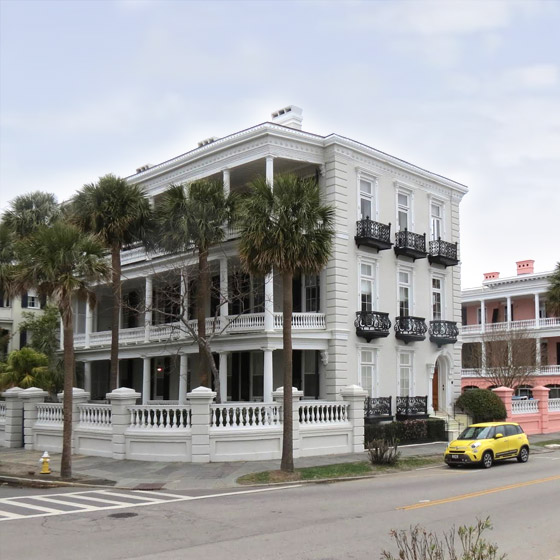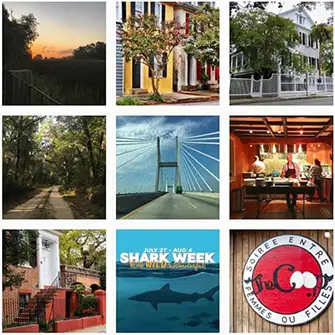
1 East Battery - Louis DeSaussure House
1 East Battery was built around 1858 by Louis DeSaussure, a wealthy businessman of French Huguenot ancestry. Three stories high and built of brick covered with stucco, this house had an eye view of the Civil War. Approximately two years after the house was completed, South Carolina became the first state to secede from the Union, and for the next several years, the occupants of 1 East Battery lived with the constant bombardment from the Union ships that made up the blockade behind Fort Sumter.In February of 1865, it was evident that the South had lost the war; Fort Sumter was evacuated, and many of the Charleston families fled to Columbia, thinking Sherman would burn Charleston (turns out, he burned Columbia instead). Before leaving the city, Confederate soldiers blew up several cannons that were part of the fortifications at White Point Gardens. A fragment of one was finally discovered and removed years later from the top part of the house at 1 East Battery.
The DeSaussures were originally from France, but in the midst of religious wars, they escaped to Switzerland in the 16th century. A branch of the family came over to South Carolina from Switzerland around 1730. They were planters, active in government, business, and medicine. In fact, my roommate my first year as a five-day boarding student at Ashley Hall was Amory DeSaussure. Her father, born in Charleston, was stationed in Turkey, and her family sent her to Charleston to board at Ashley Hall just for the ninth grade. Fortunately, we could escape the confines more often than other boarders since my parents were only fifty miles away, and Amory's elderly grandparents lived below Broad Street. However, I'm still glad Amory was there to help me maneuver that first year living away from home at age 12. Looking back, I just remember laughing a lot that year!
In 1886, Charleston had a major earthquake, and Mr. DeSaussure sold 1 East Battery to an Irishman, Bernard O'Neill. O'Neill had come to Charleston from Belfast in 1845 and opened wholesale grocery business on East Bay Street. He quickly became involved in the community and in politics, serving as an officer of the Hibernian Society and in the State Legislature. His granddaughter Elizabeth O'Neill Verner, part of the Charleston Renaissance between 1915 and 1940, was one of Charleston's most celebrated artists.
1 East Battery remained a single-family residence until the 20th century when the house was divided into three condominiums. I ate Easter dinner one year on the third floor and will certainly never forget the beauty of the view from the third floor piazza (the food was good too).
East Battery has a wealth of Charleston's grand houses, which we'll visit in the coming weeks.



